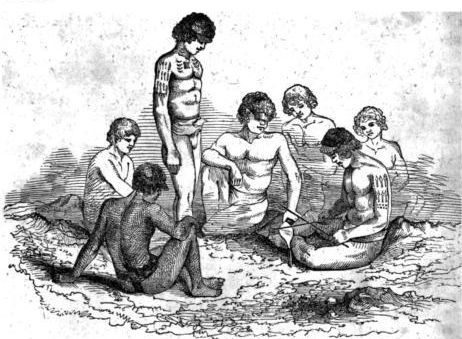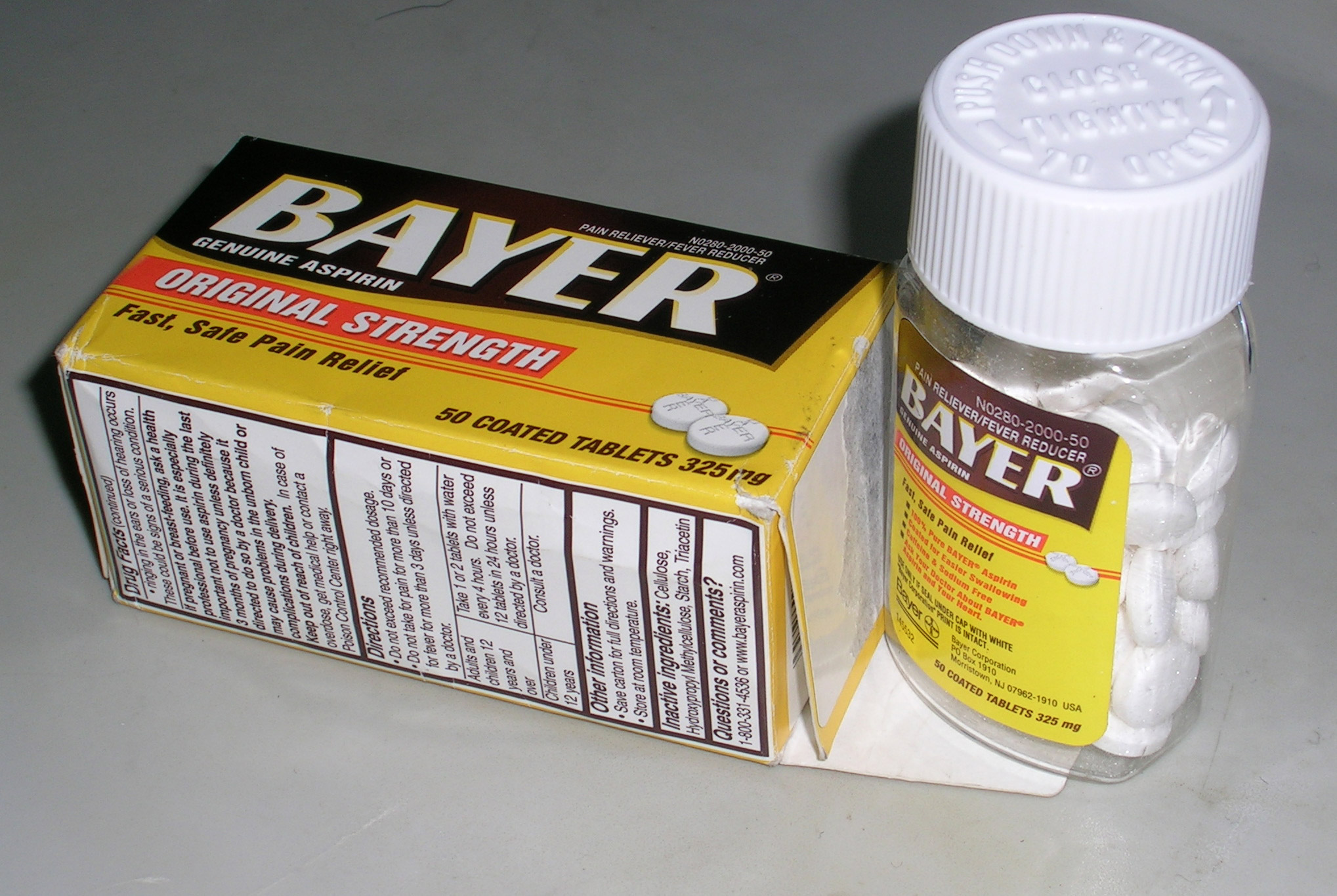|
Tinea Imbricata
Tinea imbricata (also known in parts of Indonesia as “Kaskado”) is a superficial fungal infection of the skin limited to southwest Polynesia, Melanesia, Southeast Asia, India, and Central America. The skin lesions, often itchy, occur mainly in the torso and limbs. The name ''tinea imbricata'' is derived from the Latin for "tiled" (''imbricatus'') since the lesions are often lamellar. The lesions are often treated with griseofulvin or terbinafine. The condition has also become known as "Tokelau" - the name apparently references the islands of Tokelau in the South Pacific. The risk of developing tinea imbricata is probably inherited as an autosomal recessive trait. Tinea imbricata is associated with ''Trichophyton concentricum''. Tinea pseudoimbricata The term "tinea pseudoimbricata" synonymous with "tinea indecisiva", was coined to describe a form of tinea mimicking the concentric rings of tinea imbricata, but is caused by local or systemic immunosuppression. Since then, 3 cas ... [...More Info...] [...Related Items...] OR: [Wikipedia] [Google] [Baidu] |
Griseofulvin
Griseofulvin is an antifungal medication used to treat a number of types of dermatophytoses (ringworm). This includes fungal infections of the nails and scalp, as well as the skin when antifungal creams have not worked. It is taken by mouth. Common side effects include allergic reactions, nausea, diarrhea, headache, trouble sleeping, and feeling tired. It is not recommended in people with liver failure or porphyria. Use during or in the months before pregnancy may result in harm to the baby. Griseofulvin works by interfering with fungal mitosis. Griseofulvin was discovered in 1939 from the soil fungus '' Penicillium griseofulvum''. It is on the World Health Organization's List of Essential Medicines. Medical uses Griseofulvin is used orally only for dermatophytosis. It is ineffective topically. It is reserved for cases in which topical treatment with creams is ineffective. Terbinafine given for 2 to 4 weeks is at least as effective as griseofulvin given for 6 to 8 weeks fo ... [...More Info...] [...Related Items...] OR: [Wikipedia] [Google] [Baidu] |
Terbinafine
Terbinafine, sold under the brand name Lamisil among others, is an antifungal medication used to treat pityriasis versicolor, fungal nail infections, and ringworm including jock itch and athlete's foot. It is either taken by mouth or applied to the skin as a cream or ointment. The cream and ointment are not effective for nail infections. Common side effects when taken by mouth include nausea, diarrhea, headache, cough, rash, and elevated liver enzymes. Severe side effects include liver problems and allergic reactions. Liver injury is, however, unusual. Use during pregnancy is not typically recommended. The cream and ointment may result in itchiness but are generally well tolerated. Terbinafine is in the allylamines family of medications. It works by decreasing the ability of fungi to synthesize sterols. It appears to result in fungal cell death. Terbinafine was discovered in 1991. It is on the World Health Organization's List of Essential Medicines. In 2020, it wa ... [...More Info...] [...Related Items...] OR: [Wikipedia] [Google] [Baidu] |
Tokelau
Tokelau (; ; known previously as the Union Islands, and, until 1976, known officially as the Tokelau Islands) is a dependent territory of New Zealand in the southern Pacific Ocean. It consists of three tropical coral atolls: Atafu, Nukunonu, and Fakaofo. They have a combined land area of . The capital rotates yearly among the three atolls. In addition to these three, Swains Island, which forms part of the same archipelago, is the subject of an ongoing territorial dispute; it is currently administered by the United States as part of American Samoa. Tokelau lies north of the Samoan Islands, east of Tuvalu, south of the Phoenix Islands, southwest of the more distant Line Islands, and northwest of the Cook Islands. Tokelau has a population of approximately 1,500 people; it has the fourth-smallest population of any sovereign state or dependency in the world. As of the 2016 census, around 45% of its residents had been born overseas, mostly in Samoa or New Zealand. The popu ... [...More Info...] [...Related Items...] OR: [Wikipedia] [Google] [Baidu] |
Trichophyton Concentricum
''Trichophyton concentricum'' is an anthropophilic dermatophyte believed to be an etiological agent of a type of skin mycosis in humans, evidenced by scaly cutaneous patches on the body known as tinea imbricata. This fungus has been found mainly in the Pacific Islands and South America. Growth and morphology ''Trichophyton concentricum'' produce dense, slow-growing folded colonies which are mostly white to cream colored on Sabouraud's dextrose agar and their hyphae are normally branched, irregular and septate with antler tips resembling T.schoenleinii. The production of conidia is unusual, however when present, microconidia and macroconidia are smooth walled with a diameter of approximately 4 microns and 50 µm respectively. Due to its resemblance to macroconidia, hyphae are sometimes falsely identified as macroconidia. These fungi are also considered to be osmotolerant because of their ability to grown small colonies on 5% NaCl media and are. Hair perforation assays are ... [...More Info...] [...Related Items...] OR: [Wikipedia] [Google] [Baidu] |
Trichophyton Tonsurans
''Trichophyton tonsurans'' is a fungus in the family Arthrodermataceae that causes ringworm infection of the scalp. It was first recognized by David Gruby in 1844. Isolates are characterized as the "–" or negative mating type of the '' Arthroderma vanbreuseghemii'' complex. This species is thought to be conspecific with '' T. equinum'', although the latter represents the "+" mating strain of the same biological species Despite their biological conspecificity, clones of the two mating types appear to have undergone evolutionary divergence with isolates of the ''T. tonsurans''-type consistently associated with Tinea capitis (particularly in children) whereas the ''T. equinum''-type, as its name implies, is associated with horses as a regular host. Phylogenetic relationships were established in isolates from Northern Brazil, through fingerprinting polymorphic RAPD and M13 markers. There seems to be lower genomic variability in the ''T. tonsurans'' species due to allopatric div ... [...More Info...] [...Related Items...] OR: [Wikipedia] [Google] [Baidu] |
Trichophyton Rubrum
''Trichophyton rubrum'' is a dermatophytic fungus in the phylum Ascomycota. It is an exclusively clonal, anthropophilic saprotroph that colonizes the upper layers of dead skin, and is the most common cause of athlete's foot, fungal infection of nail, jock itch, and ringworm worldwide. ''Trichophyton rubrum'' was first described by in 1845 and is currently considered to be a complex of species that comprises multiple, geographically patterned morphotypes, several of which have been formally described as distinct taxa, including ''T. raubitschekii'', ''T. gourvilii'', ''T. megninii'' and ''T. soudanense''. Growth and morphology Typical isolates of ''T. rubrum'' are white and cottony on the surface. The colony underside is usually red, although some isolates appear more yellowish and others more brownish. ''Trichophyton rubrum'' grows slowly in culture with sparse production of teardrop or peg-shaped microconidia laterally on fertile hyphae. Macroconidia, when present, are smooth-wa ... [...More Info...] [...Related Items...] OR: [Wikipedia] [Google] [Baidu] |
Scabies
Scabies (; also sometimes known as the seven-year itch) is a contagious skin infestation by the mite '' Sarcoptes scabiei''. The most common symptoms are severe itchiness and a pimple-like rash. Occasionally, tiny burrows may appear on the skin. In a first-ever infection, the infected person usually develops symptoms within two to six weeks. During a second infection, symptoms may begin within 24 hours. These symptoms can be present across most of the body or just certain areas such as the wrists, between fingers, or along the waistline. The head may be affected, but this is typically only in young children. The itch is often worse at night. Scratching may cause skin breakdown and an additional bacterial infection in the skin. Scabies is caused by infection with the female mite '' Sarcoptes scabiei ''var.'' hominis'', an ectoparasite. The mites burrow into the skin to live and deposit eggs. The symptoms of scabies are due to an allergic reaction to the mites. Often, only bet ... [...More Info...] [...Related Items...] OR: [Wikipedia] [Google] [Baidu] |
Over-the-counter Drug
Over-the-counter (OTC) drugs are medicines sold directly to a consumer without a requirement for a prescription from a healthcare professional, as opposed to prescription drugs, which may be supplied only to consumers possessing a valid prescription. In many countries, OTC drugs are selected by a regulatory agency to ensure that they contain ingredients that are safe and effective when used without a physician's care. OTC drugs are usually regulated according to their active pharmaceutical ingredient (API) rather than final products. By regulating APIs instead of specific drug formulations, governments allow manufacturers the freedom to formulate ingredients, or combinations of ingredients, into proprietary mixtures. The term ''over-the-counter'' (''OTC'') refers to a medication that can be purchased without a medical prescription. In contrast, prescription drugs require a prescription from a doctor or other health care professional and should only be used by the prescri ... [...More Info...] [...Related Items...] OR: [Wikipedia] [Google] [Baidu] |
Skin Lesion
A skin condition, also known as cutaneous condition, is any medical condition that affects the integumentary system—the organ system that encloses the body and includes skin, nails, and related muscle and glands. The major function of this system is as a barrier against the external environment. Conditions of the human integumentary system constitute a broad spectrum of diseases, also known as dermatoses, as well as many nonpathologic states (like, in certain circumstances, melanonychia and racquet nails). While only a small number of skin diseases account for most visits to the physician, thousands of skin conditions have been described. Classification of these conditions often presents many nosological challenges, since underlying causes and pathogenetics are often not known. Therefore, most current textbooks present a classification based on location (for example, conditions of the mucous membrane), morphology ( chronic blistering conditions), cause (skin conditions ... [...More Info...] [...Related Items...] OR: [Wikipedia] [Google] [Baidu] |
List Of Cutaneous Conditions
Many skin conditions affect the human integumentary system—the organ system covering the entire surface of the body and composed of skin, hair, nails, and related muscle and glands. The major function of this system is as a barrier against the external environment. The skin weighs an average of four kilograms, covers an area of two square metres, and is made of three distinct layers: the epidermis, dermis, and subcutaneous tissue. The two main types of human skin are: glabrous skin, the hairless skin on the palms and soles (also referred to as the "palmoplantar" surfaces), and hair-bearing skin.Burns, Tony; ''et al''. (2006) ''Rook's Textbook of Dermatology CD-ROM''. Wiley-Blackwell. . Within the latter type, the hairs occur in structures called pilosebaceous units, each with hair follicle, sebaceous gland, and associated arrector pili muscle. In the embryo, the epidermis, hair, and glands form from the ectoderm, which is chemically influenced by the underlying m ... [...More Info...] [...Related Items...] OR: [Wikipedia] [Google] [Baidu] |


_in_ver_gevorderde_staat_TMnr_10006761.jpg)



